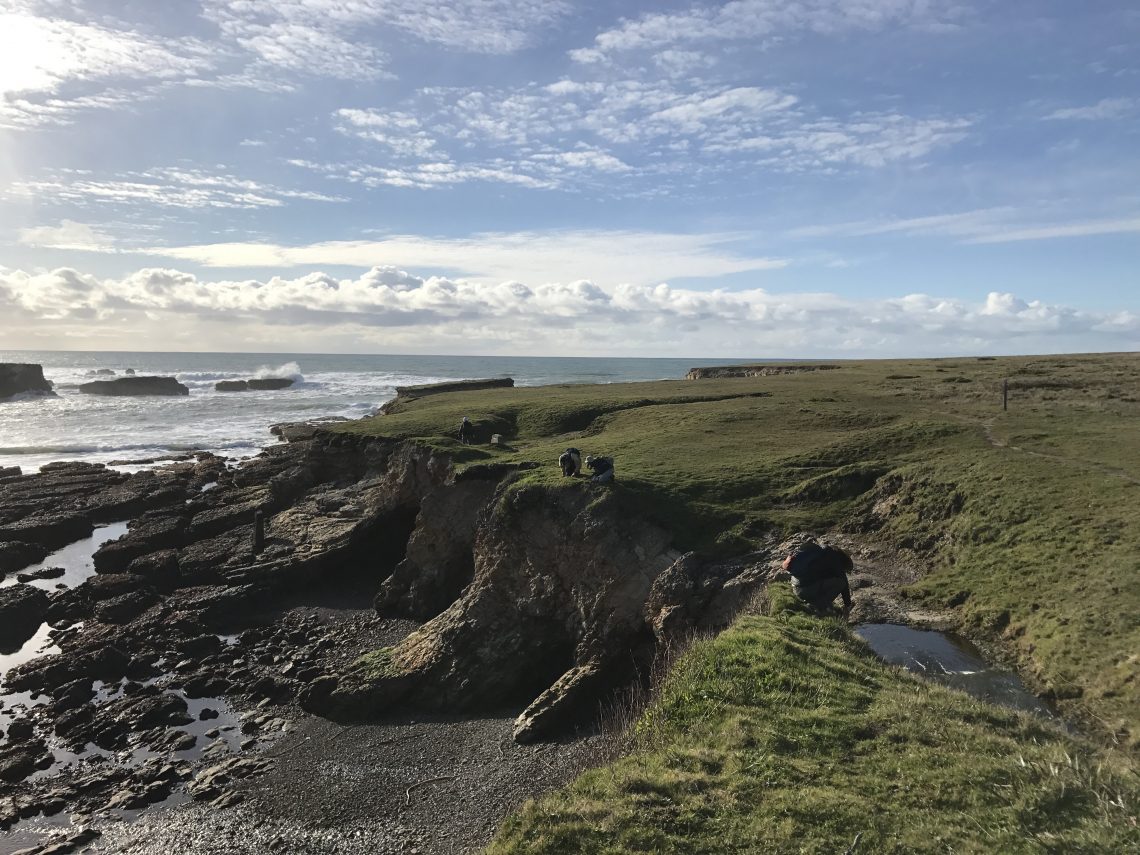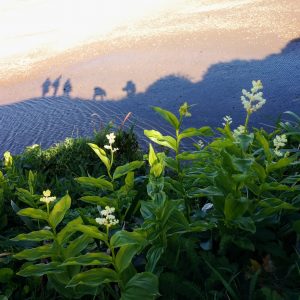

Maianthemum racemosum clings to a wet ledge over the Garcia river. Ben Anderson.
Ben Anderson, Horticulturist
Starting in June of 2016, UCBG staff have taken regular trips to Point Arena, California to conduct a floristic survey of the 1,665 acre Stornetta Unit of the California Coastal National Monument. This work has been accomplished through a contract for the Bureau of Land Management (BLM). Our team scoured ocean bluffs, fog-drenched pine forest, grasslands, and wetlands to voucher (collect specimens of) one of every kind of plant present on the parcel. We ended up collecting about 500 specimens. In addition to fulfilling our obligations to the BLM, we collected plants to take back to UCBG and showcase in our collection. We collected a number of taxa not currently represented in the garden as well as specimens to replace long-standing accessions of short-lived perennials and plants lacking detailed data.
The process was tremendously valuable in the sense of gaining horticultural insight into the growing conditions of these plants. Some sites are very windy, significantly influencing plant growth, and most areas have a significant sand component in the soil. Coastal fog brings fog-drip to areas of conifer forest throughout the dry season. Conditions in Point Arena are significantly wetter and milder than the east bay hills, with particular floral diversity on the ocean bluffs and in the wettest areas like seeps, wet meadows, and vernal pools. Poorest diversity is in the most heavily grazed areas, which are dominated by invasive grasses. Although there are green shadows under trees year round and standing water in many of the low spots into summer, the area is considered a Mediterranean climate with almost everything eventually drying out relatively late in the season. Plant growth cycles are dictated by the variable timing of saturation and drying.

Dudleya farinosa, Plantago maritima, and Armeria maritima at the closest point in the contiguous US to Hawaii. Ben Anderson.
Clare Al-Witri and I have been inspired by our experience in Point Arena, and have chosen to redevelop part of the North Coast beds to reflect the unique and beautiful flora of this part of coastal Mendocino County. Look for the renovation just across from and below Julia Morgan Hall. In order to provide a proper home for these plants, we’ve created a vernally moist depression and mounds using sandy loam soil and we’ve installed automatic irrigation. In addition to moving some existing plants into this redevelopment, we plan to showcase a rich assortment of wetland taxa, like sedges and rushes and their colorful cohorts: lilies, camas, and gentians. Also look for colorful annuals, summer-dormant bulbs, parasitic plants, and perhaps even a seabird guano endemic, all collected during our Point Arena expeditions.
Many thanks to curator Holly Forbes for securing and orchestrating the Point Arena field work.
